

Building 5Andrew Coe explains that Building 5 is the largest of the five buildings occupying the platform to the north of the south ballcourt. "This two-stage temple is constructed from a low talud topped with a row of niches where the tablero would be and then a long talud rising to the top" (188). This construction was used in a number of prehispanic palaces and temples that ascended in tiers. The talud or sloping wall alternated with vertical tableros which were rectangular panels (sometimes with reliefs or paintings). |
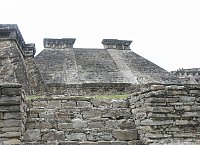
|
|

|

|
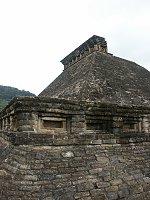
|
Column-like sculpture on the steps of Building 5Andrew Coe describes this as a seated figure with a skull for a head while Michael Coe and Koontz say the "Death God emerges from a complex scrollwork design" (142). |
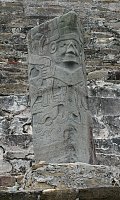
|
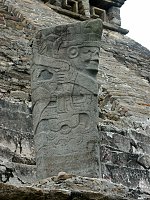
|
Left: on the platform of building 5 looking east--altar and Building 15 with Buildings 3 and 23 to the left; center: Buildings 3 and 23; right: altar and Building 3 | ||
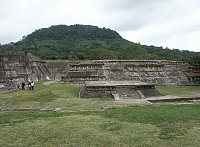
|

|

|
El Tajín's most famous building--the Pyramid of the Niches (also called Building 1)This building in the central section of the main site is somewhat small--only about 60 feet high. The four-sided building has 6 tiers in the talud-tablero construction with a single broad staircase on the east face. The balustrades on each side of the staircase have the step and fret motif, perhaps representing lightning. Each tier has a row of niches, supposedly adding up to 365, which has been generally interpreted as representing the days of the solar year. Coe and Koontz add that this building was covered with a layer of stucco and painted red, like many of the buildings at the site. Miller says that this building was completed about 800 C.E. (92) although an earlier pyramid, smaller but similar, was constructed within it.Views from the south and southeast | ||
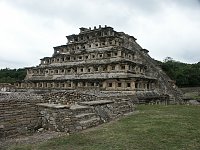
|
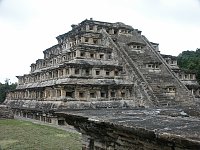
|
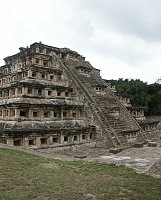
|
Views from the east | ||
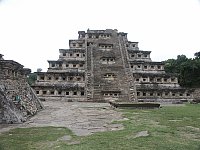
|
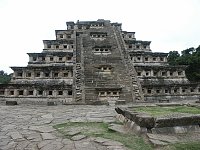
|
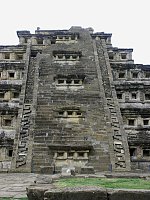
|

|
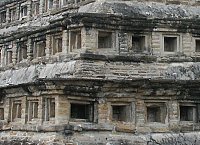
|
Left: view from the eastnortheastSome scholars speculate that offerings may have been placed in these niches, although there is apparently no evidence for this. Large rectangular bases at the foot of the pyramid may have held standards. |
View back south to the central core from Tajín Chico |

|
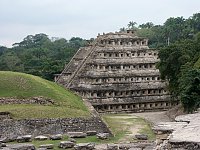
|
 Return to the El Tajín Index
Return to the El Tajín Index
 Go to the Mexico Index.
Go to the Mexico Index.
 Click here to return to index of art historical sites.
Click here to return to index of art historical sites.
 Click here to return to index of artists and architects.
Click here to return to index of artists and architects.
 Click here to return to chronological index.
Click here to return to chronological index.
 Click here to see the home page of Bluffton University.
Click here to see the home page of Bluffton University.

